| Umělec 2005/2 >> Cult of Coolness | Просмотр всех номеров | ||||||||||||
|
|||||||||||||
Cult of CoolnessUmělec 2005/201.02.2005 Jan Verwoert | image | en cs de |
|||||||||||||
|
With an international retro craze for 80s New Wave cool in full swing, everyone enjoys a bit of German chic. Now, Germans try it, too. What’s the problem with this?
Of all the caricatures of German intellectuals, I best like the one from the film Liquid Sky (USA, 1980). The film plays out in the New York new wave scene of the early 80s. Aliens have landed in the city and anyone who takes drugs or experiences an orgasm is being abducted by them. Correspondingly, many different individuals start disappearing from the scene. The only one who really understands what’s going on is a German scientist who desperately tries to get anyone at all to listen to him, saying, “I häv sis theorie. I cän hälp yu!” And he’s right, he can—but still, no one will listen to him. What he doesn’t understand is that no one actually wants to be rescued from the aliens. Quite the contrary. In the end, he’s stabbed to death by a supermodel just before she is taken by the aliens herself. I can’t help it, I just find the man a likeable sort. Why, though? The image of the German intellectual as a talking and thinking machine that understands everything (save humor) in a particular situation isn’t particularly flattering. In spite of that, I still take the caricature as a compliment. Regardless of its negative tinge, the reification of one’s own identity in the foreign perceptions of a director in the 80s New York scene does count for something. I had a similar reaction when I heard about a Laurie Anderson lecture wherein she said that in the early 80s, she’d tried to learn German in her sleep by putting a walkman with an audio German course under her pillow because it was considered cool to have a German accent in New York at the time. And then there’s David Bowie’s statement that the view of the Berlin Wall from the window of the studio where he recorded Low and Heroes with Brian Eno in 1977 had proved a decisive inspiration for the music on those albums. These ideas, when taken together, comprise a picture that makes the historical backdrop of the Cold War comprehensible as a kind of Zeitgeist, indeed, as a Zeitgeist that once again perfectly reflects the cult of coldness propagated in the New Wave or New Romanticism ideal: The German as the apocalyptic mensch-machine as sung by Kraftwerk, attractively unapproachable and deliciously unfeeling. As unreal and overblown as this picture might seem, it does have a larger meaning to the extent that it more or less represents the only image of Germans that’s made its way into the imaginations of international pop culture in the last few decades. That’s more obvious than ever, for this image is being propagated increasingly with respect to the current renaissance of the New or No Wave aesthetic in music and fashion. In the lyrics of the song Darts of Pleasure, for example, the band Franz Ferdinand paints the picture of a sardonic, seductively cool figure that embodies the promise of ‘dark fantastic passion’ that turns into a kind of ‘fantasy German’ chant in the coda of the song: “Ich heiße superfantastisch und trinke Schampus mit Lachsfisch” (my name is super-fantastic and I drink shampoo champagne with a tuna salmon fish). Taken in context of the refined reference system of British pop culture, ‘deutsch singen’ naturally represents a well-calculated gesture that above-all lends the band a stylistically confident hint of radical chic. Why else would a Scottish band name itself after an Austrian heir-apparent from the First World War? The association of the German language, shampoo, tuna champagne, salmon and aristocracy conjures up an image of decadent dandyism. This image is framed by music that evokes the new or no wave aesthetics of the early 80s with its edgy rhythms and cold, clear sounds. When taken together, one would think, an attractive context for revamping the German image as a symbol of mundane decadence instead of one of cleanliness and order. For a brief moment, the current retro-wave has enabled an attractive picture of Germans to circulate throughout international pop culture—and not of the usual nazi, bureaucrat or economist stereotype. A crucial moment, finally, for realization of a desire that has consumed German popular culture and its industry since the occupying forces brought us Elvis and the Beatles: the dream that Germans could finally be associated with pop culture and that the lifestyle culture in the Germany of the postwar-economic miracle can ultimately, really be Pop. To be sure, many attempts are being made to seize the day, as it were. The starting point is mostly Berlin, the new/old capital city seeking a new self understanding, still making every effort to fulfill the function that kept the otherwise economically irrelevant city alive during the Cold War: Displaying and advertising the identity and attractiveness of two historic regimes—and a modern republic to boot—in a kind of international shop window.* A few months ago, I encountered this feeling, this attempt to change the German image in its rawest of forms when, quite by chance, I noticed the Berlin-based fashion and lifestyle magazine Deutsch at a newspaper kiosk in Hamburg. The design of the magazine made it much more obvious and distinctive from other magazines in that it was both objective, clear and glossy and yet had a very mundane, very urban take on fashion at the same time. On the cover of issue 8 there was a black & white photo of a female model with pursed lips and a bleached, curly pony-tail fringe with hair styled so that the eyes of the woman seemed like peculiar shadows. In the culture section of that issue there’s a reprint of an article by Ulrike Knöfel called Victory Parade of Kraut Art. It had appeared the week before in the weekly magazine Der Spiegel, a report on the international success of last year’s Young German Art Armory Show in New York, covering what is known as the ’Leipzig School’ that has so recently become a blockbuster success. The publishers cite the reasons for the name on the magazine’s home page: “We deliberately chose that title — it refers to embracing and experiencing our self-understanding of ‘Deutsch’ as a synonym for cosmopolitanism, pluralism and tolerance.” That obviouly explains the publisher’s sympathetic global view but not the potential for provocation inherent in the choice of the name “Deutsch” for the magazine itself. (If this potential was non-existent, then this genial emphasis on one’s own cosmopolitanism would be superfluous. They would then be viewing themselves as a magazine that presents international fashion in and of itself). The strategic saavy in the shaping and naming of the magazine seems rather to rest in the exploitation of the image, for one’s own ends, of the image of attractive German coldness prevalent in international pop culture today. It’s more or less about lending German credence to an image that’s been established in foreign perceptions so that you yourself can profit by it. The profits garnered from this stamp of approval are measured according to capitalist laws of media society: A magazine is bought wherein the image of German identity is being sold. If the basis behind the product is successfully established, the image of ’being German’ becomes a platform on which any further contents and consumer goods can be hawked. The same holds true for the “Young German Art” and “Leipzig School” labels. In this case, a product profile of German art is being manufactured on the basis of its superficial similarities. The common denominator being foisted on the various artistic positions is a well-allotted mix of intelligence and emotion, thoroughly reconcilable with the image of the attractive coldness of the German. Art that’s been labeled ‘German’ is mostly emotionally charged anyhow, assuming a presentiment of depth (with a penchant for the abysmal). The guise art assumes can only recapture this potential emotional burden, however, in as far as it’s able to present a flavor of cool Constructivism by exposing the motif as a quote (or by using other strategies with latent, instilled irony.) The reflexive ostentation of constructiveness behind the image allows for a hinting at the wealth of inherent intelligence behind it—and yet meted out with such restraint so as not to engender a negative feeling in the buyer—ultimately effecting a sense of refinement. Once the product profile has been successfully established in the mind of the buyer, the art by such (upon close inspection relatively diverse, nevertheless thoroughly masculine) artists such as Neo Rauch or Martin Eder or Eberhard Havekost or Jonathan Meese can then be sold indiscriminately as ‘German.’ The question is whether or not this strategic inclination towards what is perceived to be a painting of German origin is more than just a short-term profitable trend with a foreseeable end. It may well be. What gives a thoroughly sensible meaning to the images and substance that this trend has produced, however, is the fact that it reflects the current mode of expression of a long-standing, fostered interest in everyday German cultural life—the much cited ’desire to return to normality’ and the equally oft-referred to ’commonplace’—that slowly (and finally) the time for the grand goodbye to the past has finally arrived. Pop culture is taking on an increasingly greater meaning in this discourse. On one hand, international pop culture as a representative of cosmopolitanism is the venue that promises a positive acknowledgement of German identity and with it, absolution from its historic guilt. On the other hand, pop culture has become an important instrument of normalization of societal life in media societies generally. It thereby contributes to defining images of personal, sexual, cultural and national identity that a society perceives as normal. If images are circulating in the mainstream of German pop culture that allow ’being German’ to be seen to be at one with the attitude or in the category of a modern, attractive urban lifestyle, then this ultimately corresponds to the ideological impetus behind the much longed-for creation of a new German normality. The Berlin-based band MIA, rooted equally in terms of both image and sound to the 80s New Wave revival, vividly articulates this longing for normality with their 2004 single Wie es ist (How it is), a cool, melodic synth-pop piece. With lines like “no longer a stranger in my own country” and “if somebody asks me where I come from, I’m no longer sorry for myself”, the singer cites a historic spirit of optimism of a generation of young Germans that’s thriving on the international scene (i.e. “Louise” is making an impression in America and “Mathias” is dancing in Ibiza) who are completely at ease with their heritage. In a series of metaphors paraphrasing the colors of the national flag—black coffee, red mouth, yellow sun—she identifies a positive personal attitude to life (love) with a detached relationship to her own national identity. The refrain runs: “It is what it is, says love / what it is, asks reason / where’s it’s going (to) is what we want to know / entering a new German land.” Along with the metaphors in the lyrics, the clothes and instruments for the band in the song’s video match the colors of the German flag. The ’desire to be normal’ is portrayed as a kind of radical chic, and is asserted as the earnest desire of progressive youth. What’s bizarre about all this is that a band that portrays itself as rebellious (and outlines its position in other songs as politically left) is not only engaging public opinion in a curiously conformist way, but also even comes across as utterly cooperative, practically functioning as tools for evaluating national self-worth, much in the manner of the image politics that the Schröder government uses in its ads. The state doesn’t even need to appear as a cultural cheerleader anymore; the young rebels are doing them the favor of playing politics for it. Where did this idea of making pop music in the name of the nation come from, anyway? I really don’t understand it at all. That may be because as someone in my early thirties, I already lack the sense for current fashion and music of mid-twenties types—but then again, my pop cultural coming-of-age in the 80s was stamped with a certain anarchistic tenor. “Germany must die so that we can live,” was a line from a song sprayed on a wall by the punk band Slime in the small town I grew up in. It stayed there for years and never seemed an especially radical statement to me. It simply reflected my split relationship to my national identity as something that wasn’t to be overcome but that was deepened by its inherent contradictions. Of course all the talk that Germany must die in order to allow new life to spring forth is also nodded at in radical leftist variations on the need to ’leave your history behind.’ And of course such anarchistic lingo, when coming out of my mouth, sounds like little more than another example of the aforementioned radical chic. Yet to my thinking, there should be a formal refusal to question this history or the slogan in fact articulates a position that is the outcome of critical historical reflection: namely to never ever speak generally or in any other affirming manner on behalf of the nation. In a sense, these slogans are a barrier that I neither can nor want to breach, representing an emotional attitude on the basis of which I intuitively perceive and refute products such as “Deutsch,” “Young German Art” and MIA. This barrier also corresponds in a significant way to the border between the German sounds and images of the 80s that are being recycled at the moment and those that are disappearing. MIA aligns itself with the intelligent, demure and urban New Wave art-pop of 80s bands like Ideal. By contrast, blunt muck-punk by bands like Slime are barely relevant anymore as an esthetic reference point in the current pop industry. I don’t consider the attempt to strategically exploit images of Germans that has been created by outside observers and are circulating in international pop culture to be problematic per se. The dispossession and the re-appropriation, the de- and reconstruction of pictures, symbols and sounds is a game that engenders discussion in pop culture and can be driven further through a kind of desire for provocation that impressively melds pop cultural historic understanding with a sense of humor. The crucial point, though, is that in this particular case, the acceptance of a positive German image must been viewed against the background of a striving for normalization of national self perception—as symbolized in the new Berlin Republic—thereby losing its playful aspect. The spirit that’s being unleashed here and being articulated by MIA, especially, is the absurd idea that it is possible, as a German, to one-sidedly end open historical discourse about external perceptions of German identity. As if it were up to any German to unilaterally dictate how their identity and history should be seen by the global public in the future. Ultimately, this desire for normalization really means the desire for more control of international perceptions about Germany. The reason that this desire will remain unfulfilled is that German culture, on the basis of global-political integration that produced the presumptuous ambitions and catastrophic results of the politics of the Third Reich, has irretrievably lost the monopoly on the analysis of German identity and history. In principle, every individual from those historically affected countries has the right to engage in this discussion and develop their own ideas about Germany. One reason that I as a German can’t simply come to terms with my self identity is that I will never completely have the say in the formulation of this identity, but rather must deal with the fact that someone else is always going to tell me what it means to be German, either appreciatively or deprecatingly, with sympathy or with derision and hatred. And this limited/restricted power doesn’t release me from the obligation of answering questions about my identity. The experience that I have when I’m abroad and recognized as German is precisely that, because prompted to do so, I must take a position on my own identity, at the same time seeing that by taking this stand can only exert limited influence on foreign perceptions of this identity. Conditioned by history, the discussion of German identity can only really occur in multilateral forum. A perhaps macabre, but to my thinking accurate example of how the model of such a multi-lateral, pop-culture staging of a view of Germans could be conceived, is Piotr Uklanski’s piece The Nazis (1998). This project is a collection of film stills of all kinds of actors that ever played a German soldier, SS officer or something similar. The list includes Hollywood stars such as Clint Eastwood, Yul Brenner, Omar Sharif and Kurt Russell, as well as lesser-known performers of German, French, Polish and other origins. The thoughtfully blatant title and the placement, row by row, without comment, of striking film stills makes this an unabashed piece of pop culture provocation. It’s telling, though, that The Nazis not only dresses itself up in a radical chic aesthetic, but also makes the performative character of the historic representation of Germans painfully clear. The provocation inherent in the work is only embodied in the fact that it shows how easy it is for actors of many nations to play Nazis. If one assumes that Uklanski isn’t trying to minimize or make fun of historical facts, then The Nazis personifies precisely that multifaceted aspect of the analysis of the portrayal of German identity and history that exists today as a result of the global-political burden of inheritance handed down to us from Nazi Germany. In this sense, what would be worth pursuing is NOT achieving that intangible state of unilaterally asserted normality; rather consciously addressing existing multilateralism with respect to the definition of German identity could prove useful. Then we might turn to pop culture with questions like: What should a magazine like ‘Deutsch’ look like when it’s being marketed in Holland, Poland or England? How should a band like MIA present itself if it is only seeking to serve as a vehicle for self-reflection to a target-group of German youth? Then we’d really be talking about the sensibility of a discursive game surrounding the meaning of pop images in an international forum. * On this, see the excellent essay by Jesko Fezer and Axel John Wieder: “Raum begrenzter Möglichkeiten. Stadtentwicklung in Berlin nach 1989”. (Space with Limited Possibilities. City Development in Berlin after 1989). In: Komplex Berlin. Catalog of the 3rd Berlin Biennale. Publisher, Verlag der Buchhandlung Walther König, Cologne, 2004, pp. 73-82.
01.02.2005
Рекомендуемые статьи
|
|||||||||||||
|
04.02.2020 10:17
Letošní 50. ročník Art Basel přilákal celkem 93 000 návštěvníků a sběratelů z 80 zemí světa. 290 prémiových galerií představilo umělecká díla od počátku 20. století až po současnost. Hlavní sektor přehlídky, tradičně v prvním patře výstavního prostoru, představil 232 předních galerií z celého světa nabízející umění nejvyšší kvality. Veletrh ukázal vzestupný trend prodeje prostřednictvím galerií jak soukromým sbírkám, tak i institucím. Kromě hlavního veletrhu stály za návštěvu i ty přidružené: Volta, Liste a Photo Basel, k tomu doprovodné programy a výstavy v místních institucích, které kvalitou daleko přesahují hranice města tj. Kunsthalle Basel, Kunstmuseum, Tinguely muzeum nebo Fondation Beyeler.
|























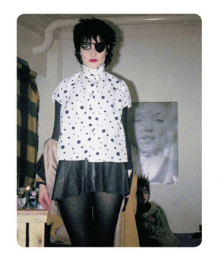




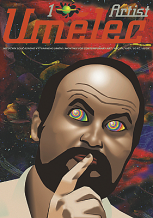
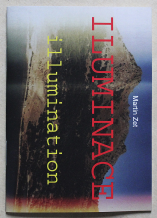
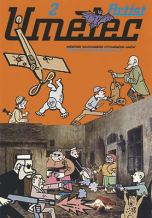
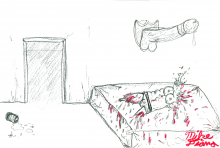


 New book by I.M.Jirous in English at our online bookshop.
New book by I.M.Jirous in English at our online bookshop.
Комментарии
Статья не была прокомментированаДобавить новый комментарий